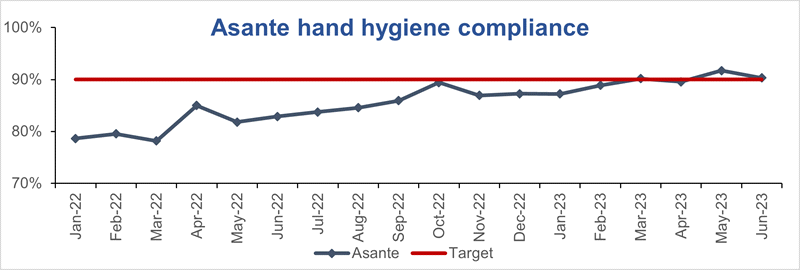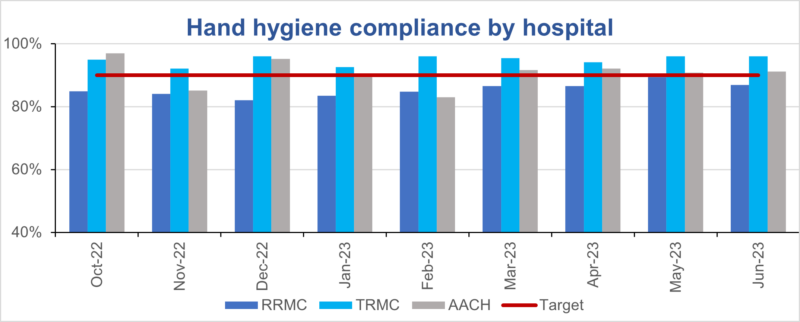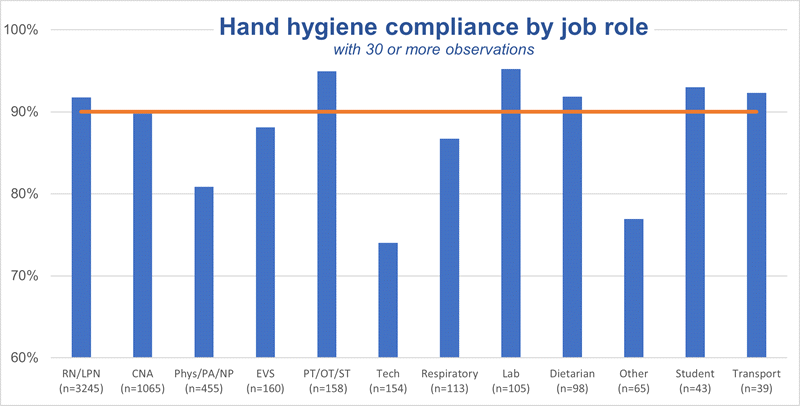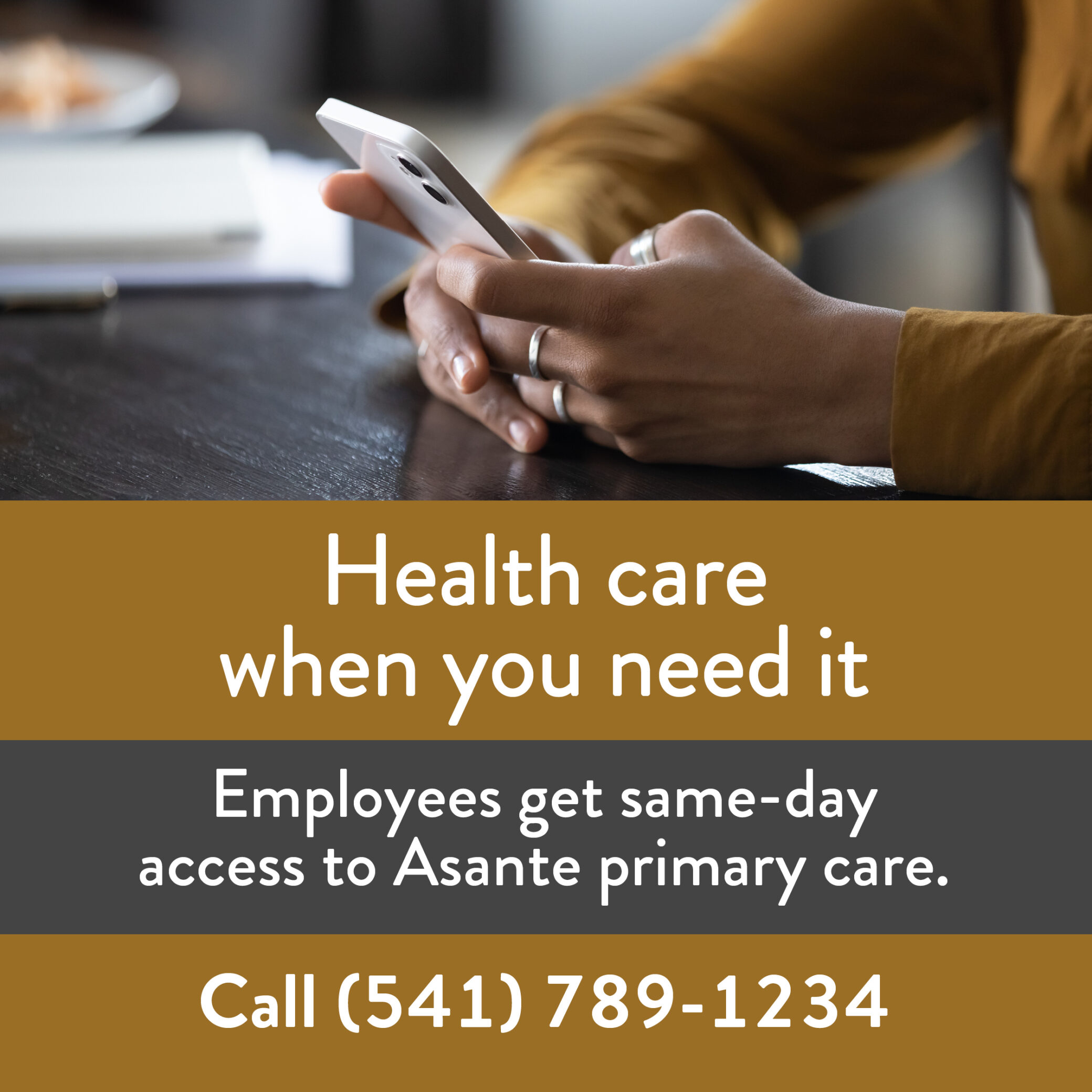Share:
Wash your hands! Our patients depend on you
No matter how much we clean, germs are all around us. If we are not vigilant, our staff can be the source of an infection that may be the difference between a patient’s recovery and their death.
Performing hand hygiene is one of the best ways to prevent spread of infection to our patients, staff and community, and Asante is on a mission to improve our hand hygiene compliance rates.
As a system, we made a strong, steady comeback from the low of 78% compliance toward the end of the pandemic, to achieving and maintaining the target of 90% for the past four months.

ATRMC staff achieved above the target every month this fiscal year and AACH staff achieved the target for the last four months. ARRMC staff are actively working to improve their rates.

Analysis of variation in hand hygiene performance by personnel type allows for targeted staff education.

As a reminder, an alcohol-based hand sanitizer is the preferred method for cleaning your hands because it:
- Is more effective at killing potentially deadly germs on hands than soap.
- Is easier to use during care, especially when moving from soiled to clean activities with the same patient, or when moving between patients, patient rooms or common areas.
- Improves skin condition with less irritation and dryness than soap and water.
Technique matters
For the most effective use of alcohol-based hand sanitizer, use the right amount, coat your hands entirely, rub for 20 to 30 seconds and then until dry.
Wash with soap and water when hands are visibility soiled, after caring for patients with enteric infections (C. difficile or Norovirus), before eating and after using the restroom.
Appropriate hand hygiene includes diligently cleaning and trimming fingernails, which may harbor dirt and germs. Artificial nails are prohibited for this reason.
Gloves are never a substitute for cleaning your hands and should be promptly changed if damaged, before moving from contaminated body site to clean body site and if visibly dirty or soiled. Similarly, gloves should be changed if you touch potentially contaminated surfaces (blankets, bed rails, keyboard) before touching the patient, administering medications, or tending to dressings or lines.
Don’t be the source of infection — take the time to perform hand hygiene. Be a patient safety champion and encourage those around you to cleanse their hands. We all need the reminder of just how important those 20 to 30 seconds are to protect lives.
Resources (log into the Asante network to access)
Hand Hygiene policy 400-IC-IC-0004
Hand Hygiene Fast Facts 400-NPD-0039
CDC Hand Hygiene in Health Care Settings
NHSN Dashboard MyAsanteNET
If you have a question, please contact the author or relevant department directly.



